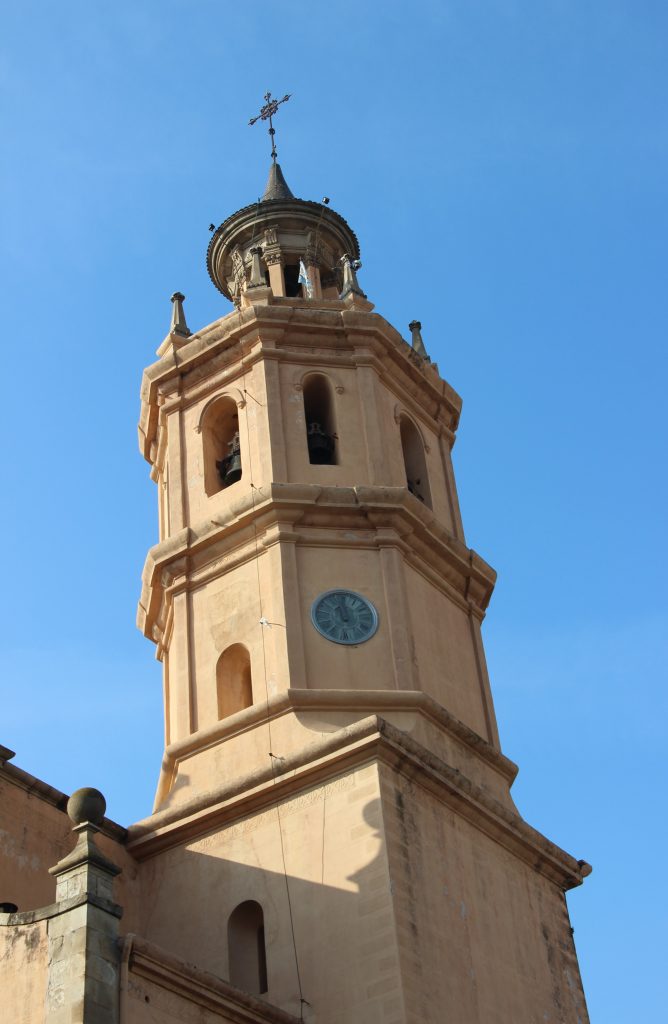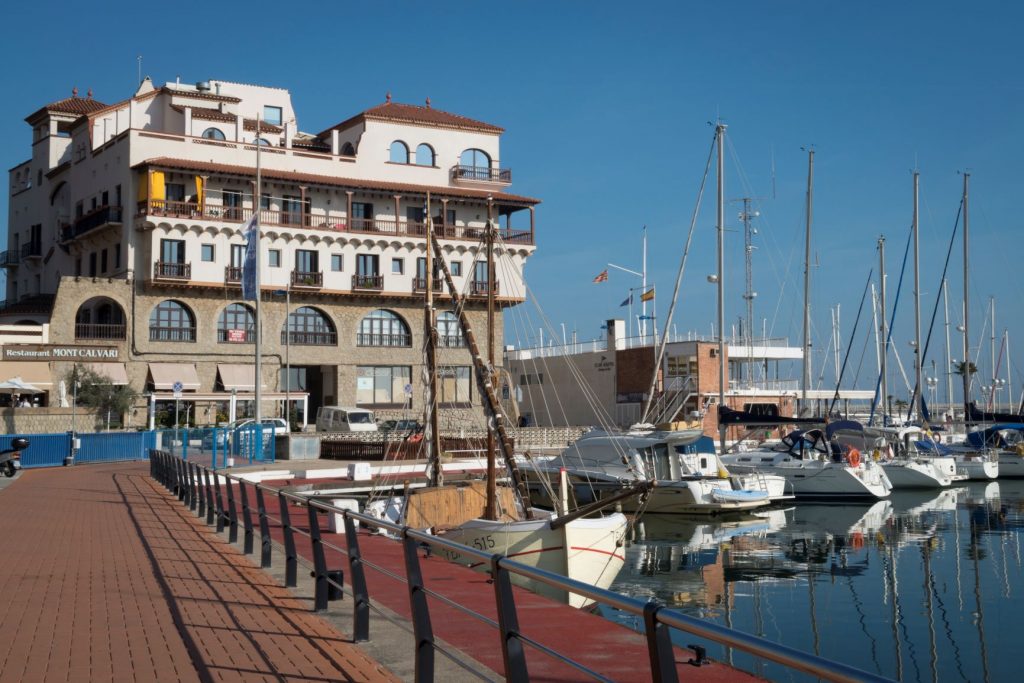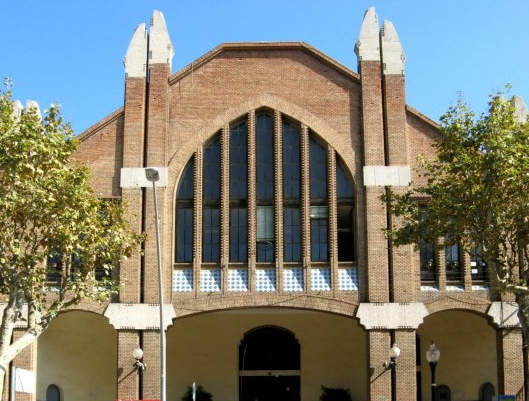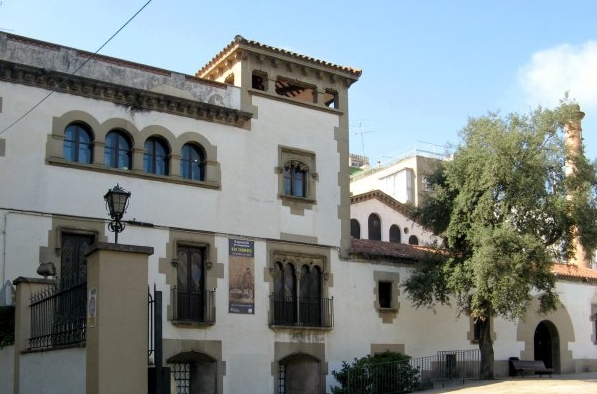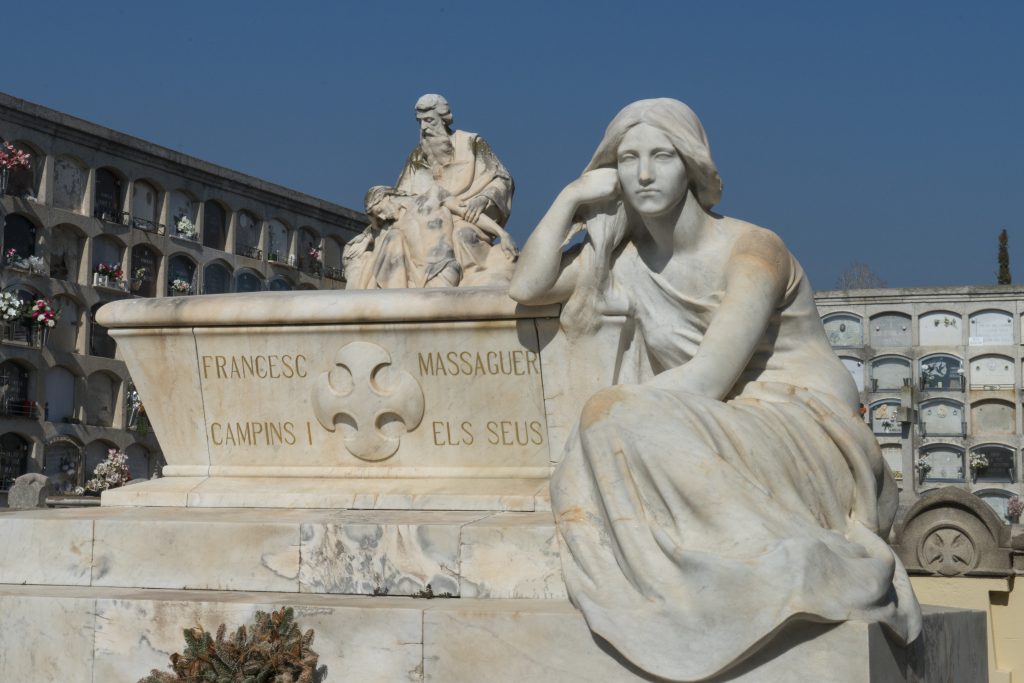We invite you to take a walk through Arenys de Mar, while doing so we hope you enjoy the tranquility of its streets as well as the lively atmosphere of the Riera, the nerve center of the town.
These are the highlights you cannot miss:
This equipment was , at first, a hostel (17th century), a bid oven, and after several transformations, in 1773, it became a town hall.
You can currently find the Citizen Service Office, the Fidel Fita Historical Archive and the Tourist Office.
Work designed by the architect Ignasi Mas i Morell (1925-1929). The monumental façade with exposed brick and worked stone blocks that crown it in a modernist style stands out ( look at the small round rosettes).
This market is complemented by the non-sedentary sales market that takes place every Saturday morning along the Riera where you will find fruit and vegetables, clothes, household items,etc.
It was built between 1584-1628 and later enlarged with the Chapels of the Sorrows, the Minerva and the Blessed Sacrament. The main building is in the late Gothic style, with a Baroque façade flanked by a bell tower crowned by a turret, as well as a common room.
You cannot miss the monumental baroque altarpiece dedicated to the Virgin Mary (1706-11), work by the sculptor Pau Costa and the Reniassance-style base made of marble and jasper from Tortosa, by the Arenys sculptor Antoni Joan Riera.
The opening hours for the venue are from Tuesday to Saturday from 9am to 1pm and from 4pm to 8pm, and on Sundays from 9 am to 2pm.
Located on the site of an old flour mil from the 16th century, it was bought by the Mollfulleda family in 1896 for the production of the famous stomach liqueur of aromatic herbs.
It is currently owned by the municipality and the headquarters of Ràdio Arenys , as well as hosting a stable program in the CCCalisay Exhibition Hall during the weekends:Friday from 6 to 8.30 pm and Saturdays and Sundays from 11am to 1pm and 6 to 8.30 pm.
It is a neoclassical style building commissioned by the Indian Josep Xifré in 1844-46 and ceded as a hospital for the village. It is part of the Route of the Indians, as in the 18th and 19th centuries many villagers left town at a young age to try to make good in the Americas. They were willing to work hard for the sole purpose of making a fortune. We propose a route leading from the top of the Riera down to the sea, ending in a walk through Sinera cemetery.
Declared a Cultural Asset of National Interest, it was built between 1865 and 1867, and is a clear example of a Mediterranean sailor cemetery. It is located of the Turó de la Pietat, it contains mausoleums made by prominent Catalan sculptors such as Venanci Vallmitjana, Josep Llimona and Frederic Marès. The poet Salvador Espriu , buried here, turned it into the mythical cemetery of Sinera.
Opening hours are from Monday to Sunday from 8 am to 5.30 pm in winter and from 8 am to 7 pm in summer.
It is one the most important ports of the Catalan coast and the most obvious example of the town’s long history and maritime tradition. Fishing and all the industry that is created around the port move much of the economic activity of the population.
The fish auction that takes place every afternoon (at 4 pm) when the keels and boats return, is a sight to see unload the boxes with the fresh fish.
We recommend you the pedagogical itinerary that you can find in the fishing dock, or you can also see it by clicking here.
It was built around the 16th century Chapel of the Sant Crist and located on the Maltemps cliff, that was a luxury hotel in the early 20th century.
It has been the subject of various reforms. We currently find a restaurant on the ground floor and private homes on the upper flooors.
They were built to defend the town from pirate raids. Only four are conserved: with a ribbed vault in the Gotic style. Torre de Can Cabirol , with a machicolation and protruding watchtower. Torre d’en Llobet, built to defend the neighbourhood of Sa Boada, which conserves its original corbels. Torre dels Encantats, built on the Turó d’en Puig Castellar ( 13th-16th centuries) on the site of an Iberian village (4th-3rd century BC) and located on private land.
Click here

